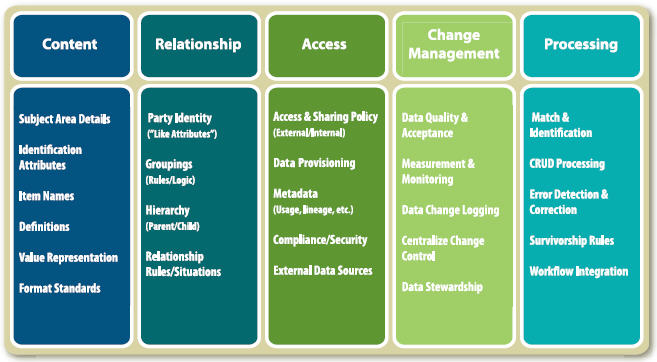LESSON - A Deliberate Approach to Master Data Management Vendor Selection
By Evan Levy, Partner, Baseline Consulting

The phrase “MDM vendor selection” can be misleading. Most companies with master data management (MDM) hubs haven’t performed “selection,” per se. Instead, a vendor introduces its MDM solution to an interested IT manager or business owner. Naturally, the vendor focuses on the strengths of its MDM solution, rather than what the customer needs, and MDM selection becomes sales driven, instead of deliberate and requirements driven.
The company ends up with an MDM tool that doesn’t meet its needs and eventually demands the creation of custom code. Time and resources are spent conforming business activities to the specifics of the application. And all too often, companies have to augment existing software products with “bolt-on” functionality to deliver MDM-like functions, only to discover that the resulting custom solution can’t support operational data integration.
In all likelihood, the business hasn’t spent time assessing its master data needs. Business priorities for master data are vague, so it’s impossible to prioritize certain functions over others. Without a rigorous understanding of the desired state for MDM, vendor selection becomes a generalized function/feature comparison, and not a mapping of capabilities to business requirements.
With any strategic technology, requirements should be ironclad before making an investment. This level of due diligence does not mean you should avoid MDM vendors, but keep in mind that vendors are there to sell products, and thus won’t emphasize the capabilities their solutions can’t support. Also, remember that you only need to master data if that data is shared between systems and the reference data in each of those systems is represented differently.
So how does a company define its MDM requirements? There are five functions associated with data management, as described below:
- Content. This function represents the necessary subject-area constraints for the data that will be mastered. It includes the terminology, definitions, and formatting of the data. For instance, if a car company needs to master “product color,” we’d need to understand the valid color choices of exterior paint for each of its models.
- Relationship. This identifies whether there is a relationship between individual entries within the subject area, and the groupings, hierarchies, and interrelationships between those items.
- Access. Access infers privileges on data. A manager might be allowed to update an employee’s compensation (based on the relationship function), but not be allowed to modify his own compensation.
- Change management. This function focuses on the need to track individual changes to the master data. For instance, if the automobile company wants to add a new product color, that color needs to be reviewed and approved by the product review team.
- Processing. Processing is the definition of rules for identifying, adding, or removing master data content. For example, when red cars need to be identified, colors like “maroon” and “candy apple” might also be considered red in the product catalog. When we need to manipulate master data, the rules associated with that data can determine how individual processes are executed.
When evaluating the functional requirements across these five areas, a company can determine fairly quickly which vendor products conform to their needs.
So what’s the next step in determining your MDM requirements? First, understand where you’ve had challenges with your master data. Where does it vary across systems? Focus on the operational systems that originate the data. Document scenarios for when and how data is created, read, updated, and deleted. Then you should be able to distill and map your MDM requirements, and select a subset of vendors who can meet those needs. You might want to benchmark those companies using a subset of your own data—but that’s a whole different set of best practices!
For a free white paper on this topic from Baseline Consulting, click here and choose the title “The Baseline on MDM: Five Levels of Maturity for Master Data Management.” For more free white papers, click here.